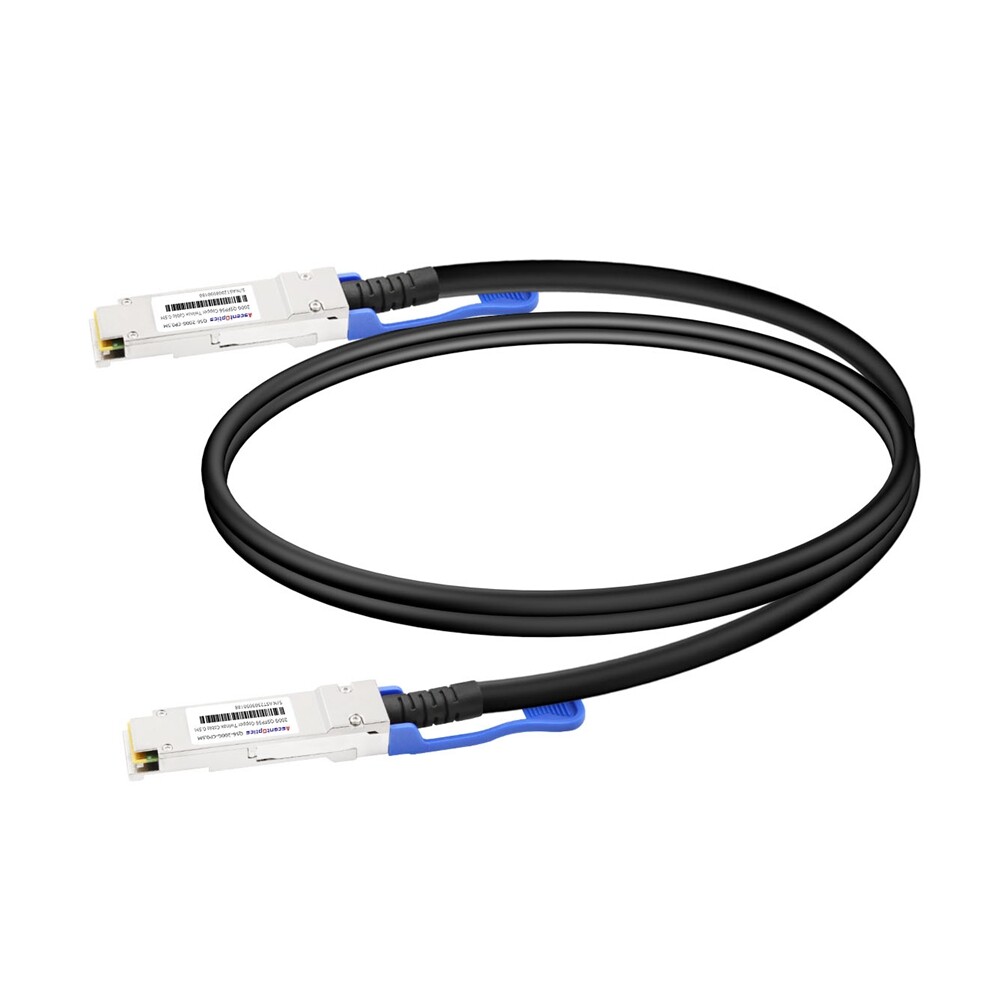High Speed Cables As a low-cost alternative to optical modules for short distance connections, it is widely used in data centre interconnection scenarios such as SATA storage devices, RADI system scenarios, core routers, 10G or 40G Ethernet, etc. What is high-speed cable? What are the benefits of using high-speed cables?

What are high-speed cables?
Direct Attach Cable (DAC) is usually a cable assembly that is purchased in fixed lengths with fixed connectors at both ends. The connectors used at the end of a high-speed cable are the same as those used in an optical module, but the connector module on top of the high-speed cable is free of expensive optical lasers and other electronic components compared to an optical module, resulting in significant cost and power savings in short distance applications. widely used in storage area networks, data centres and high performance computer connectivity.
What is the structure of a high-speed cable?
High speed cables are made of silver plated conductors and foam insulated cores, shielded by wire pairs and total shielding. With excellent attenuation, low delay and interference immunity, the high speed cables are available in 30 to 24 AWG and in 2P, 4P or 8P configurations for a wide range of applications.
What are the common classifications of high-speed cables?
1、10G SFP+ to SFP+ DAC
The 10G SFP+ to SFP+ DAC uses a passive biaxial cable assembly and connects directly to the SFP+ module. With high density, low power, low cost and low latency, it is now a mainstream interconnection tool in cloud computing and cloud storage.
2. 40G QSFP+ to QSFP+ DAC
The 40G QSFP+ to QSFP+ DAC provides a highly cost-effective way to establish 40G links between internal racks and cross-rack QSFP+ switch ports, upgrading the access layer uplink to the core to 40G/100G, which is widely used in high-speed backbone networks, enterprise network switching and network storage for its high speed and low latency features.
3. 40G QSFP+ to 4xSFP+ DAC
The QSFP+ to 4xSFP+ DAC has a 40G QSFP+ interface at one end, which meets the requirements of SFF-8436, and four 10G SFP+ interfaces at the other end, which meets the requirements of SFF-8432, connected in the middle by a 12-core MPO high-density optical cable, and then according to the customer's demand for cable length at both ends, a brancher is added in the middle of the MPO cable to achieve a 40G This is the most economical and simple way to convert switch ports.
4. 40G QSFP+ to 4XFP DAC
The 40G QSFP+ to 4XXFP+ DAC has one 40G QSFP+ interface on one end and four 10G XFP interfaces on the other. As there is no DAC copper standard for XFP optical modules, the equipment transmits low signal compensation and the cable itself has high losses, so it can only do short distance transmission, generally only within 2m, to interconnect the 40G QSFP+ interface to the XFP port.
5. 25G SFP28 to SFP28 DAC
The 25G SFP28 to SFP28 DAC provides customers with 25G high-bandwidth data interconnect capability in compliance with the IEEE P802.3by Ethernet standard and the SFF-8402 SFP28, and is widely used in data centre or supercomputing centre scenarios.
6. 100G QSFP28 to QSFP28 DAC
The 100G QSFP28 to QSFP28 DAC provides customers with 100G high-bandwidth data interconnect capability, offering four duplex channels with operating rates up to 25Gb/s per channel and 100Gb/s aggregation bandwidth, and is compliant with the SFF-8436 specification for use between devices with QSFP28 ports.
7, 100G QSFP28 to 4 SFP28 DAC
The 100G QSFP28 to 4 SFP28 DAC with 100G QSFP28 interface at one end and four 25G SFP28 interfaces at the other end provides customers with 100G high-bandwidth data interconnection capability in compliance with SFF-8665/SFF-8679, IEEE 802.3bj and InfinibandEDR standards, and is widely used in data centre or supercomputing centre system scenarios.
What are the benefits of using high speed cables?
1. High performance: suitable for short distance cabling in data centres, wide range of use, integrated solutions with high switching capacity.
2、Energy saving and environmental protection: the internal material of the high-speed cable is copper core, the natural heat dissipation of copper cable is good, energy saving and environmental protection.
3、Low power consumption: High-speed cables have low power consumption. As the passive cable does not need power, the power consumption is almost 0; the active cable power consumption is generally around 440mW.
4. Low cost: Copper cable is much less expensive than fibre optics, so using high-speed cable can significantly reduce the cost of cabling throughout the data centre.
User's guide
When forming a link stack, high-speed cables connect one switch to another. Let's take a 10G SFP+ cable as an example. When the SFP+ port on the switch supports access to the high-speed cable, you simply plug the SFP+ module on the high-speed cable into the SFP+ port on the switch until it locks. If you want to replace the already plugged-in cable with an active optical cable, as a first step you need to gently pull the rubber ring on the cable to move the SFP+ module out of the cable (see Figure 1). Once the port is vacant, pinch the SFP+ module of the active fibre optic cable from both sides to insert it into the port of the switch (see Figure 2) and make sure the module is fully inserted.
LiComm offers SFP+-EDFA pluggable amplifier
2019-04-25 NextDAC AOC: Understanding the Differences
2023-06-27